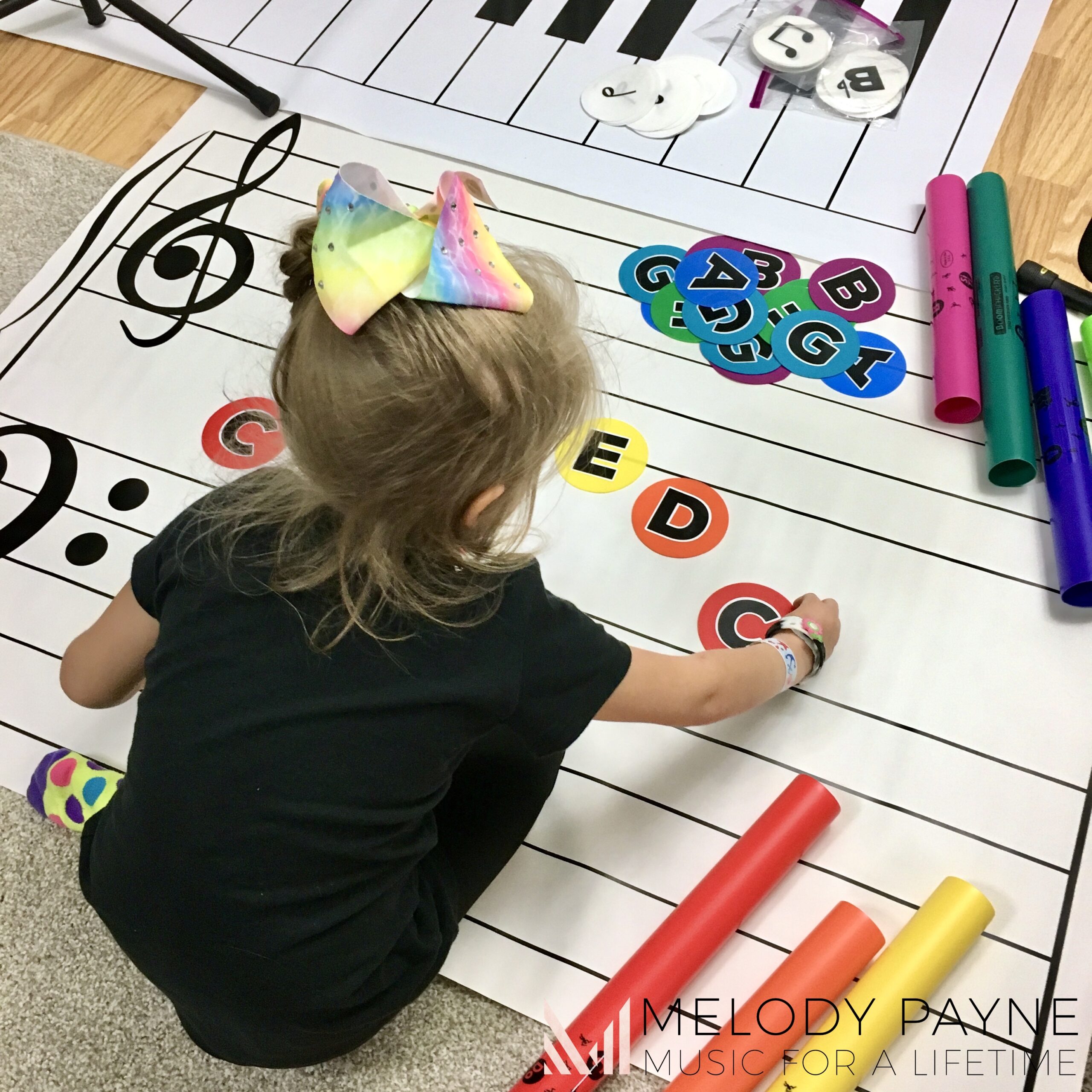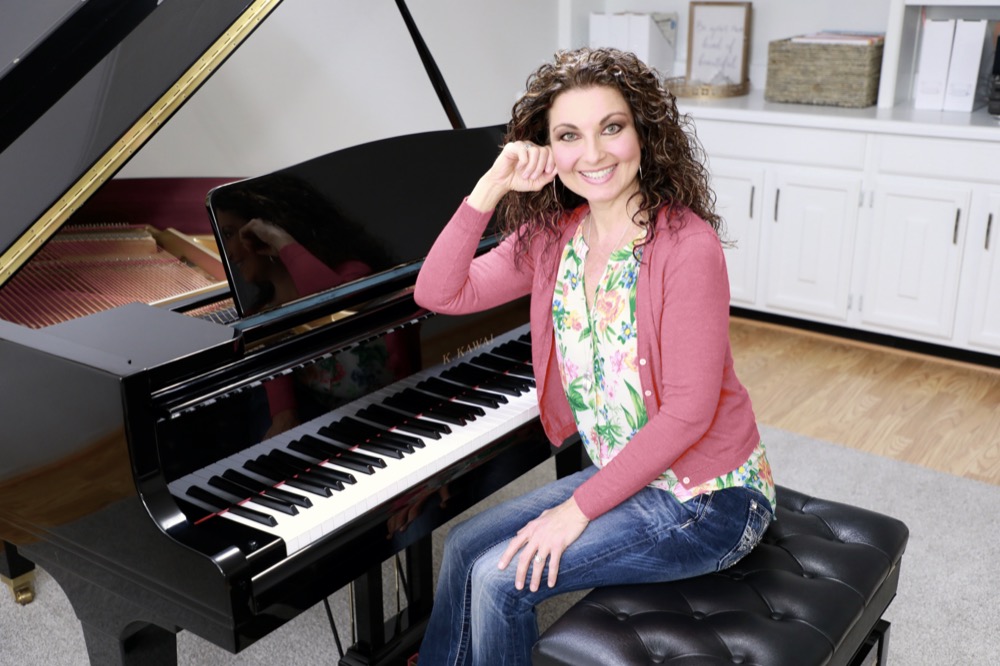3 Quick and Easy Ways to Train Music Intervals During Piano Lessons
This post may contain affiliate links. If you purchase something through an affiliate link, I will receive a small commission at no cost to you. For more information, read the disclosure statement here.

Intentionally taking the time to train students to read music intervals quicker during piano lessons goes a long way in helping students to develop the skill of reading notes in groupings, rather than reading from note to note.
Through intentionally focusing on training music intervals during lessons, students are then equipped with a strategy for improving the speed of their note reading – even more so than just through learning their pieces.
In this article, I will be sharing three quick and easy ways to fit training music intervals into a busy 30-minute lesson. Before I get into the list of tips, I do think it’s a good idea (in general) to let students in on your thought process, so they understand why they need to learn a particular skill.
I think the words we use to describe what we are doing: training vs. drilling can influence how students feel about the activity. Does the word drilling have a positive or negative connotation? Something worth considering.
Emphasizing the benefits they can derive from that training can be motivating for the student. You might start out by asking them a question: “Why do you think it would be a good idea to be able to read music intervals quickly?”
You have nothing to lose by pre-empting the question of “Why do I have to do X?” It’d be worse to have a student not ask but wonder to themselves why they must do something.
If the student has yet to learn 6ths or 7ths, then you might demonstrate a piece that you know they would love to learn in the future, and then point out the new music intervals they’d be encountering.
I imagine students will be even more motivated if they realize it’s a piece they could learn later in the school year.
1) Train Music Intervals Using Materials You Already Have
While you can certainly use a specific music interval worksheet, you can also use what you already have. Have you ever printed a page of a score only to realize it was the wrong page or it was printed incorrectly? Instead of tossing those pages into the recycle bin right away, collect a pile of these pages and you can use any of these to study music intervals.
You might start out by introducing an interval they’re already familiar with but haven’t mastered, or even a new interval they haven’t encountered in their music yet. Provide the appropriate explanations on a whiteboard (example: “a 5th goes from line to line or space to space” – then show a couple of examples). Here are examples of exercises you might try with your students:
For an older student:
- Set a timer and see how many 4ths they can circle in 30 seconds.
- Switch over to a keyboard activity where the teacher gives the starting note, and the student plays a 4th up or down.
For a younger student:
- Circle all skips on the page using their favorite color.
- Switch over to an ear training activity where the teacher gives a starting pitch and the student sings a step up using solfege, using the starting pitch as ‘Do’.
2) Use Flashcards or Boom Cards™ for Music Intervals
I like to start out by having students visually differentiate the music intervals by seeing Middle C as the first note for the various music intervals. Once they get comfortable being able to differentiate between 2nds, 3rds, 4ths, 5ths, 6ths, 7ths, and octaves with Middle C as the first note, then I add other cards to make it more challenging.
There are a variety of flashcards for music intervals available, whether you prefer something tangible or digital. I personally use a combination of both types of flashcards for music intervals (if you need even more flashcard ideas, check out 5 Ways to Use Music Note Flash Cards in Piano Lessons).
The Music Intervals Boom Cards Bundle is convenient because I can use it on my tablet for in-person lessons, and each deck covers specific interval types.
The Boom Cards™ can be accessed on your browser for screen sharing. All my young students love using Boom Cards™ during their online piano lessons.
3) Cloth Staff to Train Music Intervals
Students of all ages can benefit from off-bench activities even if it’s only for a short duration. I give the student a starting note and ask them to put the game chip on the line or space that is a 3rd lower than the original note, etc.
I have tried this as a whiteboard activity and discovered that my students prefer cloth staff activities better.
If you have a large vinyl floor staff, this is also a great option for a hands-on interval training activity. Students enjoy seeing and manipulating the intervals on the floor staff and on the giant vinyl piano keys as well.

All these activities are something quick and easy you can try for a couple of minutes in between learning new pieces. They don’t take much time, they don’t require a lot of prep or materials, and students really enjoy the change of pace during their lessons.
These are my ideas on how to fit music interval training into a busy lesson. What are your favorite ways to incorporate interval reading into your piano lessons? Comment below and let us know your students’ favorite interval activities!
More blog posts with piano teaching ideas:
Don't miss out!
Follow on Facebook and Instagram, join the best Facebook group for piano teachers, and subscribe to the newsletter to get helpful teaching tips, resources, and tutorials delivered straight to your inbox every week.
Michelle Madasamy
Michelle Madasamy
Welcome!

Hi! I’m Melody Payne, a pianist and piano teacher, educational resource author, a fun-loving wife to the most wonderful and talented hubby I could ask for, and a lifelong learner who loves to share. I want to make your life as a music teacher easier by writing and sharing helpful and relevant music teaching articles, and by creating educational resources with your very own students in mind. If you are a parent who wants to enroll your child in piano lessons, I’d love for us to get started building those skills that can give your child a lifetime of musical enjoyment!


This Post Has 4 Comments
Where did you purchase the floor staff and circles? Very useful I’m sure!
Absolutely! We use them all the time for so many things. I’ve added links to them on my favorite tools page at https://melodypayne.com/tools Enjoy!
I’ve taught theory for 20+ years now, and I’ve found the need to include more recent music references to help students identify intervals… Let me know if you’d like my list!
I always think it’s a lot of fun trying to find the perfect set of tunes for each student, based on songs they already know 🙂